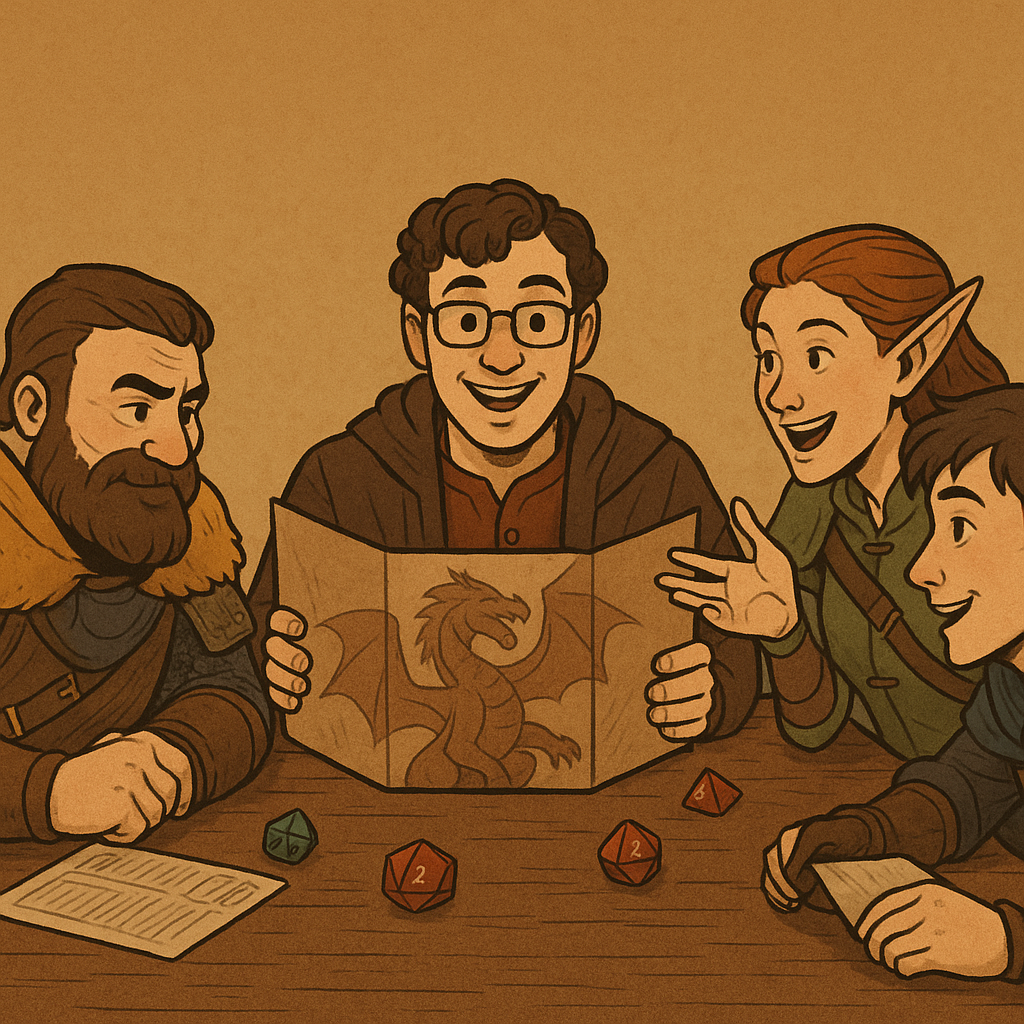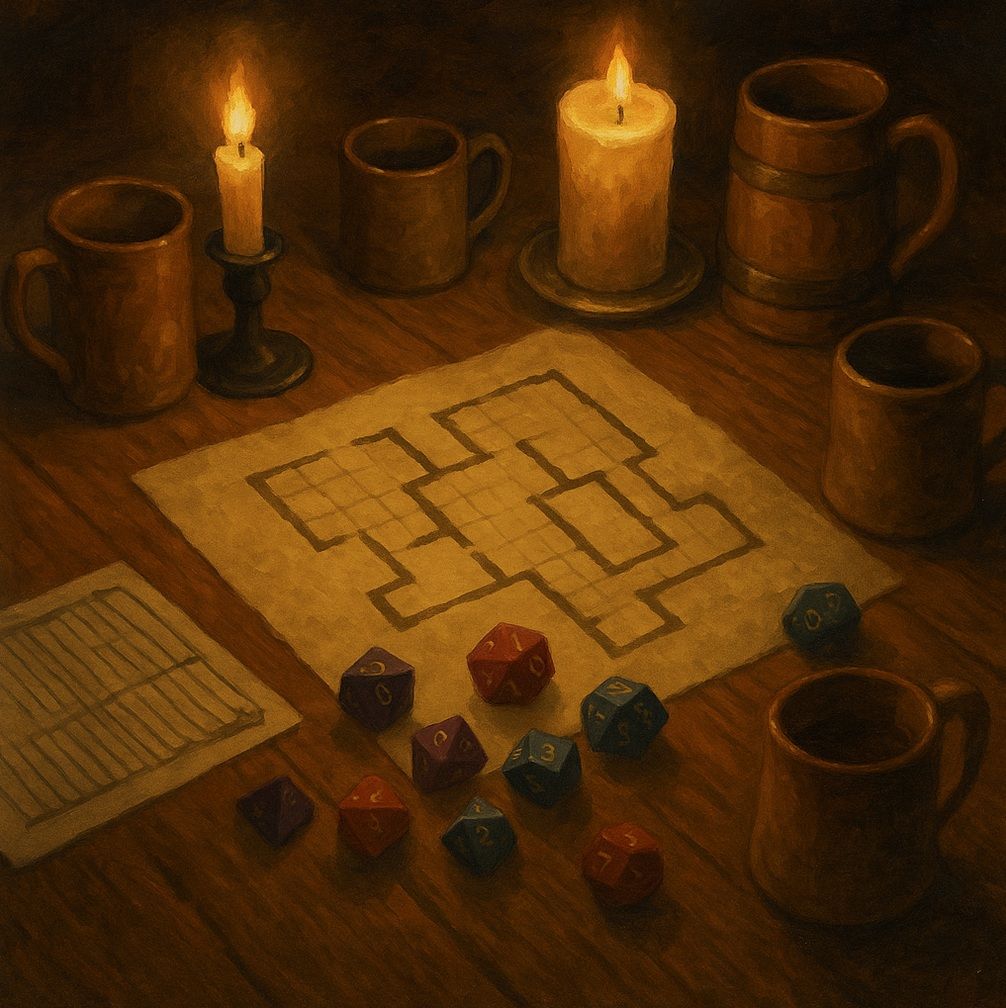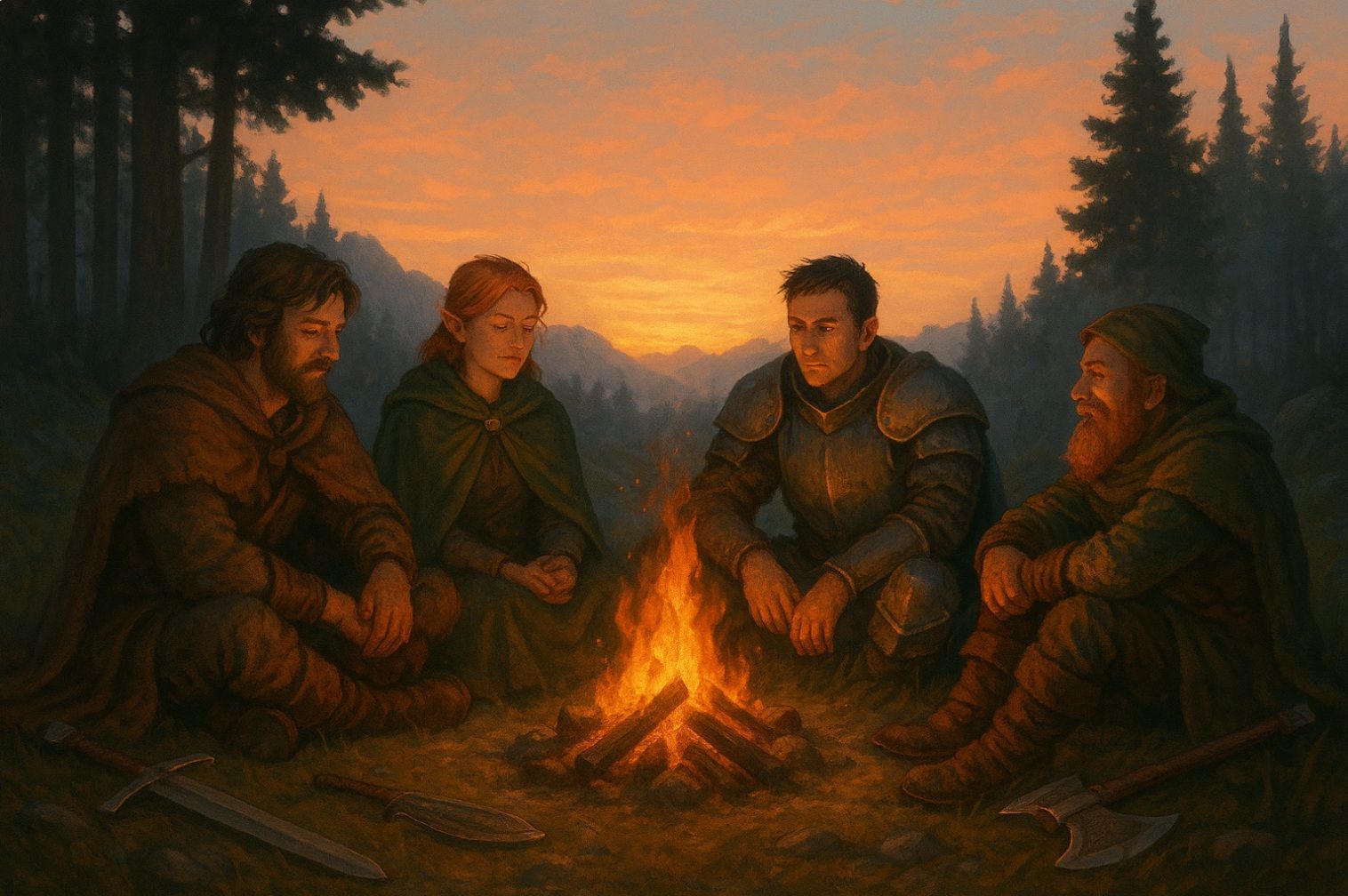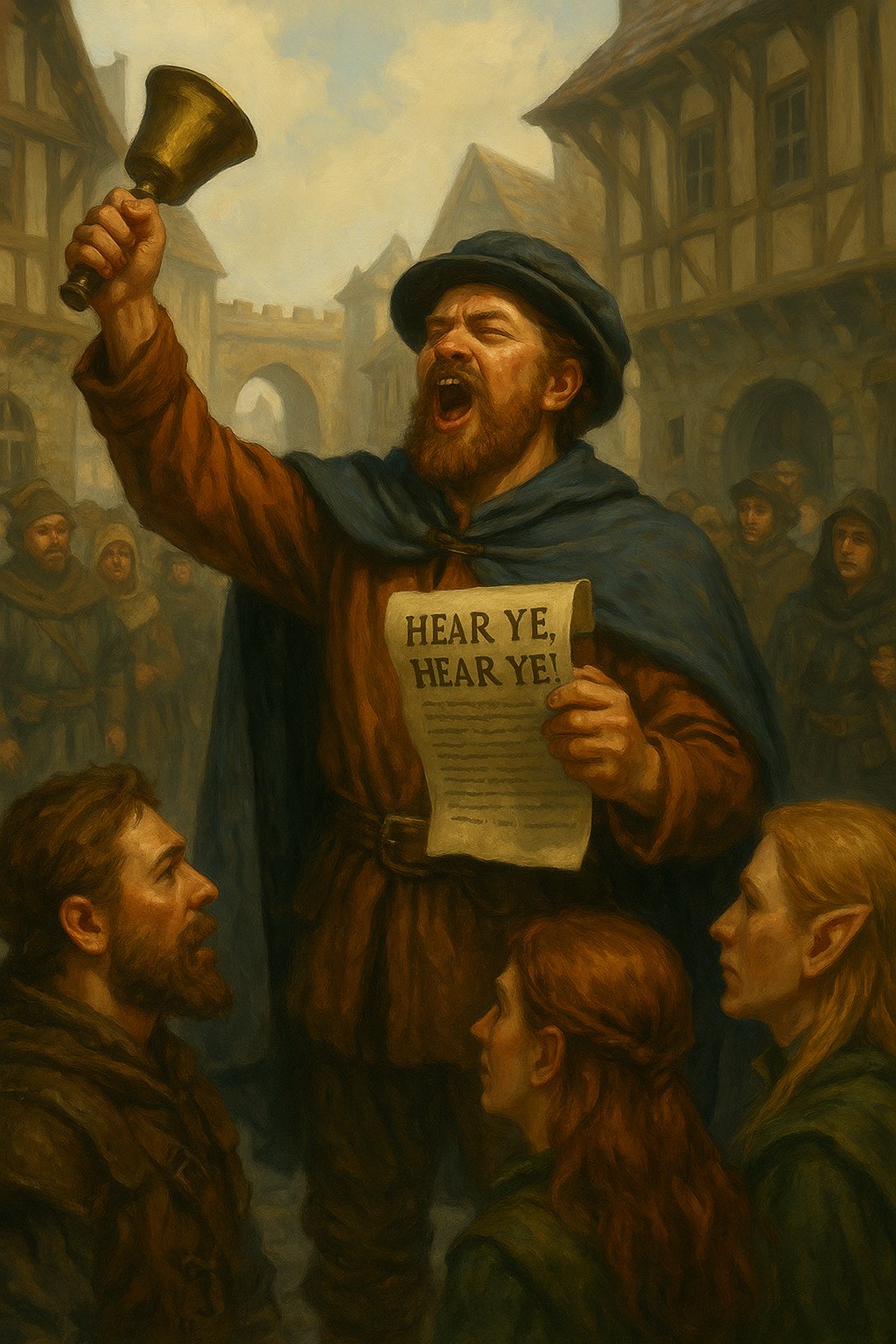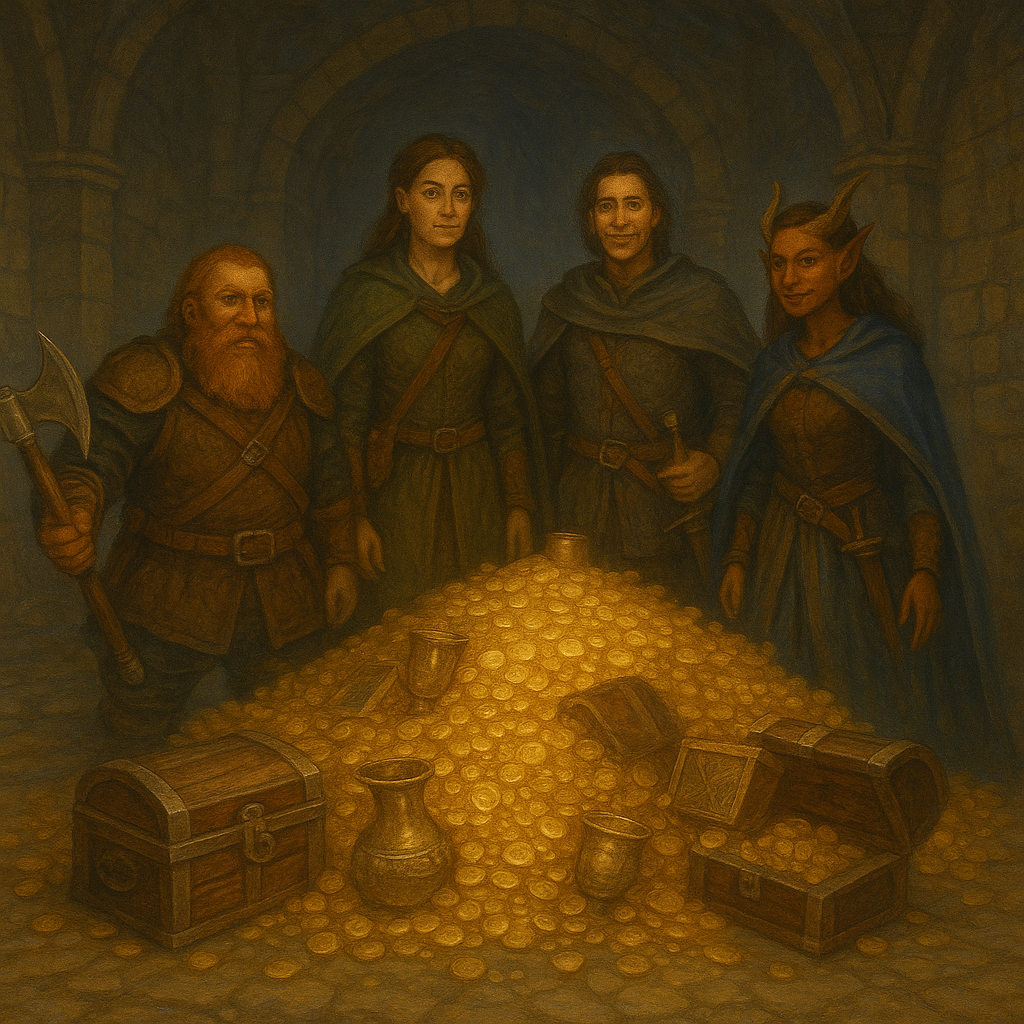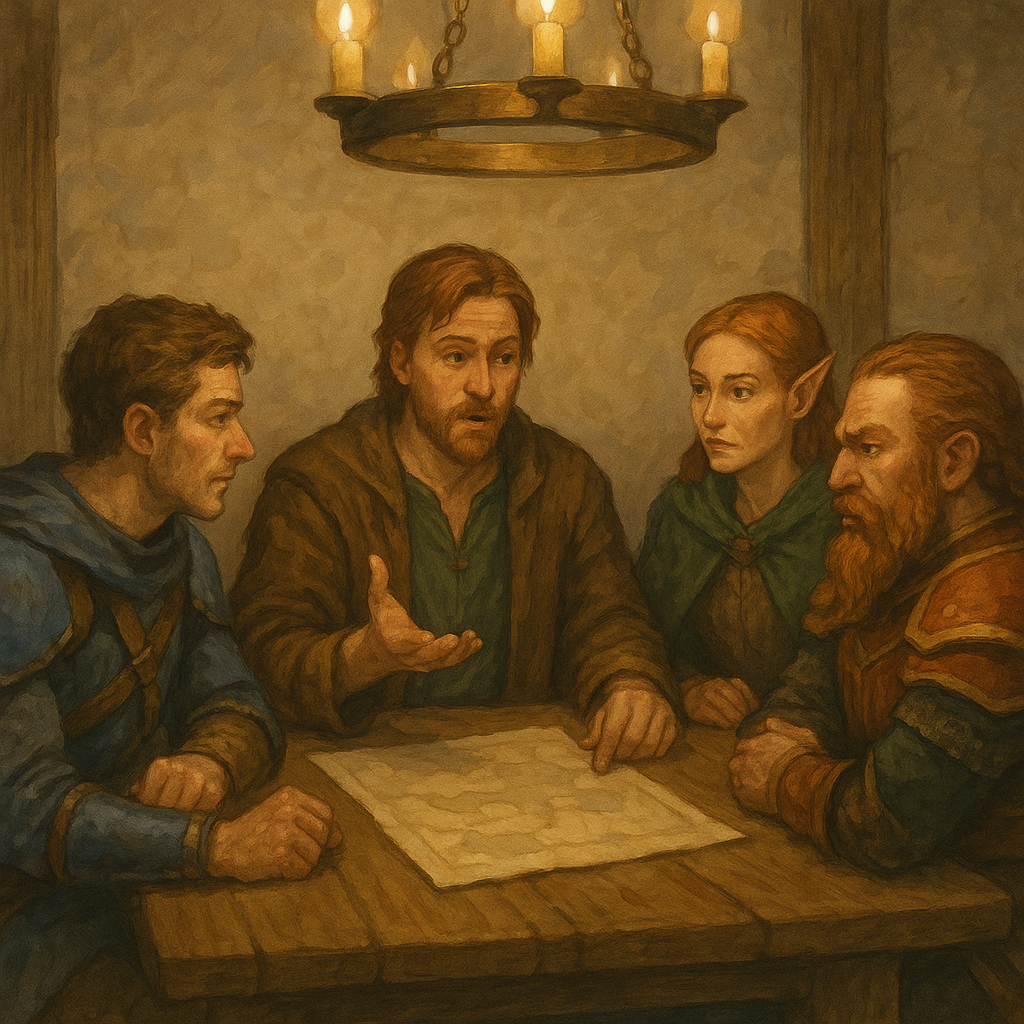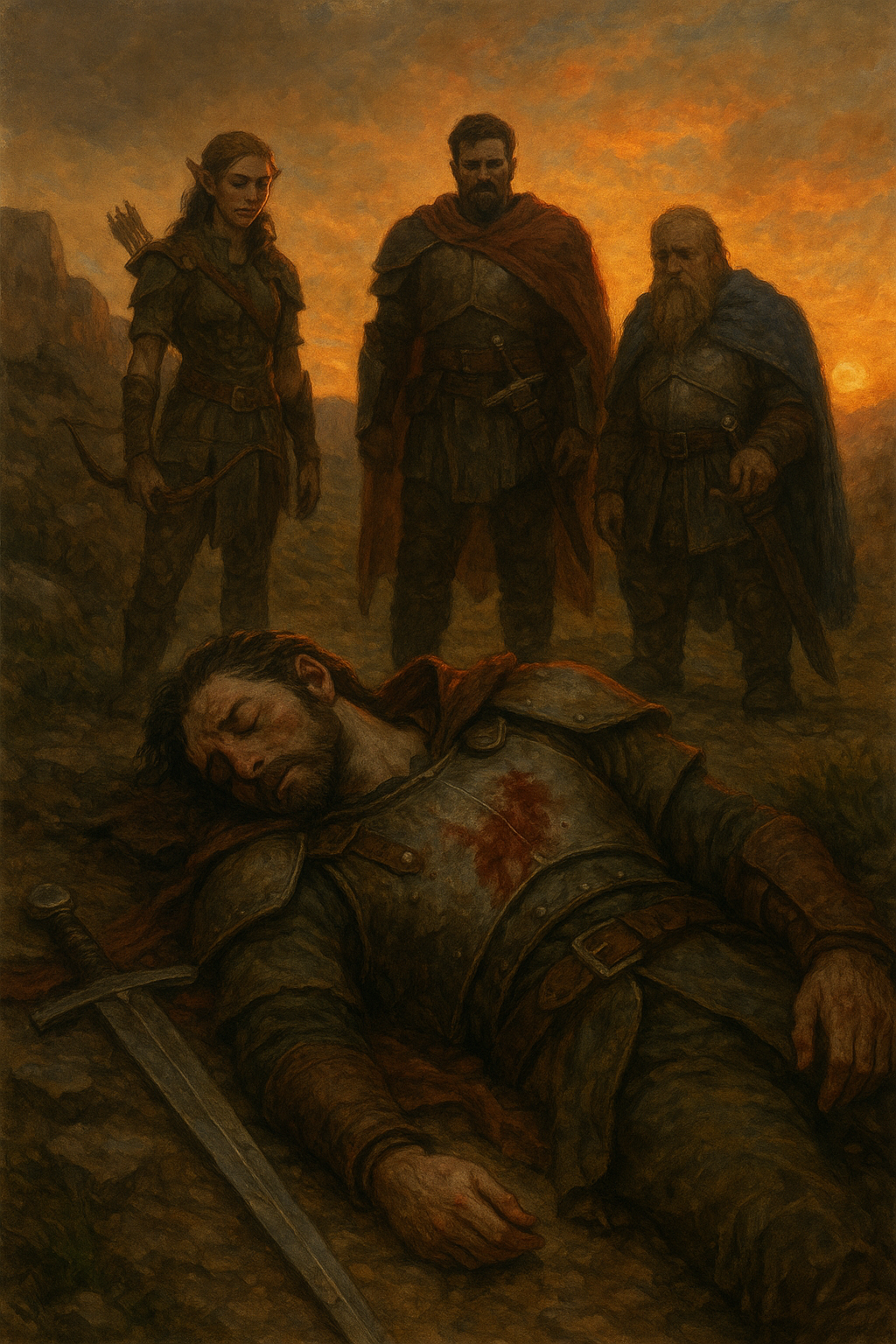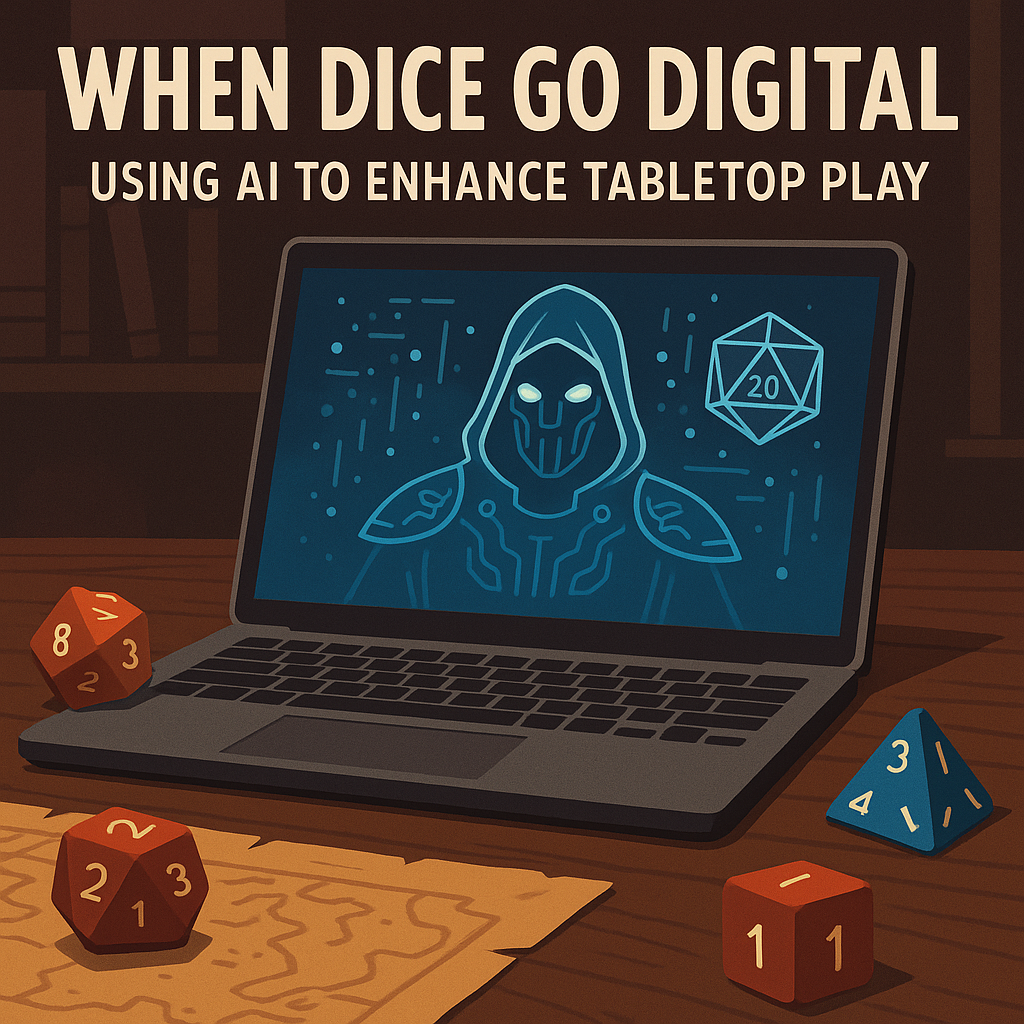Player Archetypes: Understanding Different Player Types and Their Needs
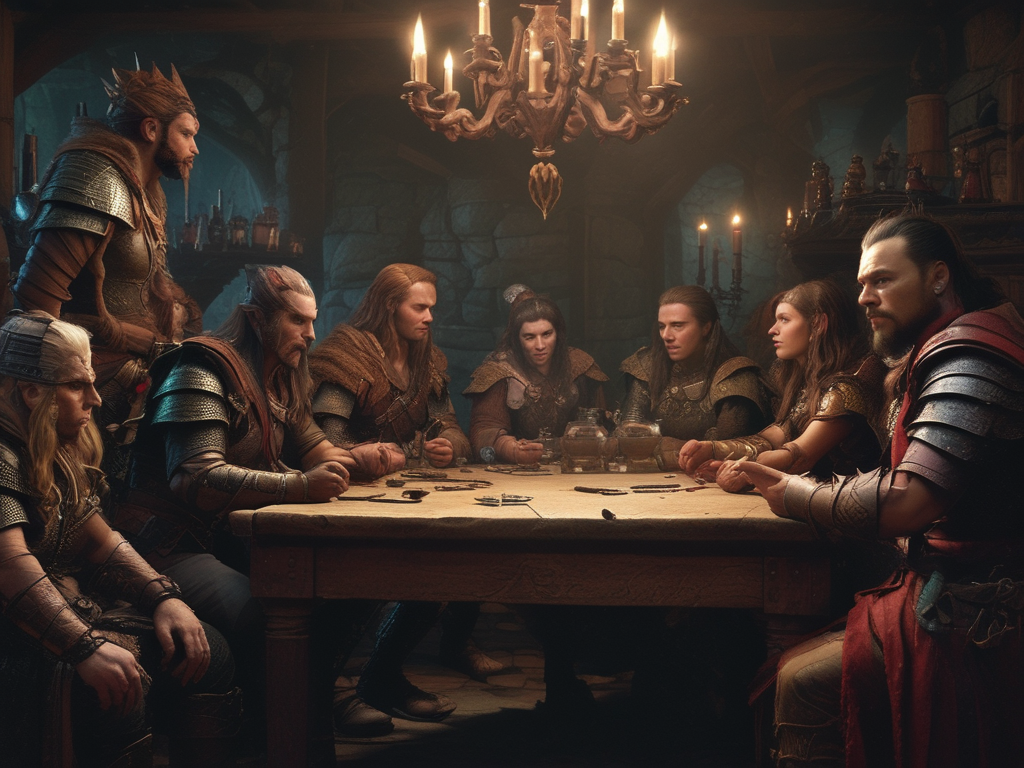
Dear Readers, welcome back to our Dungeons & Dragons (D&D) blog! Today, we’re diving into the fascinating world of player archetypes. Understanding the different types of players at your table is crucial for creating a fun, engaging, and harmonious gaming experience. Each player brings unique motivations, preferences, and styles of play, and recognizing these can help you cater to their needs and enhance your overall campaign. In this post, we’ll explore various player archetypes, discuss their characteristics and preferences, and provide practical tips for addressing their needs and keeping everyone at the table happy. So, let’s embark on this journey of understanding and celebrating the diversity of D&D players!
The Importance of Understanding Player Archetypes
Recognizing and understanding different player archetypes offers several benefits:
- Enhanced Engagement: By catering to each player’s preferences, you can create a more engaging and enjoyable experience for everyone.
- Improved Dynamics: Understanding player archetypes helps you manage group dynamics and ensure that all players feel included and valued.
- Balanced Game Design: Knowing what motivates each player allows you to design encounters and storylines that appeal to a wide range of interests and play styles.
Common Player Archetypes
While every player is unique, several common archetypes frequently appear at D&D tables. These archetypes can overlap, and players may exhibit traits from multiple types. However, identifying the primary archetype for each player can guide your approach to game design and facilitation.
1. The Storyteller
Characteristics:
- Passionate about the narrative and world-building
- Enjoys character development and intricate plots
- Values role-playing and emotional engagement
Preferences:
- Deep, immersive storylines
- Rich character backgrounds and arcs
- Meaningful NPC interactions and dialogue
Needs:
- Opportunities for role-playing and character growth
- Complex and evolving plots
- Detailed world-building and lore
Tips for DMs:
- Integrate character backstories into the main plot and create personal story arcs.
- Encourage role-playing by providing NPCs with distinct personalities and motivations.
- Design story-driven sessions with moral dilemmas, emotional stakes, and plot twists.
Example: Create a subplot where the Storyteller’s character must confront a long-lost family member who is now an influential figure in the campaign’s main conflict. This adds personal stakes and opportunities for deep role-playing.
2. The Power Gamer
Characteristics:
- Focused on character optimization and mechanics
- Enjoys combat and strategic gameplay
- Seeks powerful abilities, items, and advantages
Preferences:
- Challenging and rewarding combat encounters
- Opportunities to optimize and showcase their character’s abilities
- Clear rules and mechanics
Needs:
- Balanced and strategic encounters that test their skills
- Opportunities to acquire powerful items and abilities
- Recognition of their character’s achievements
Tips for DMs:
- Design challenging combat encounters that require strategy and tactics.
- Reward players with meaningful loot and character advancement opportunities.
- Clearly communicate rules and mechanics to ensure fairness and clarity.
Example: Create a multi-stage boss battle that requires the Power Gamer to utilize their character’s abilities strategically. Reward them with a powerful magical item that enhances their combat prowess.
3. The Role-Player
Characteristics:
- Immerses deeply in their character’s persona
- Prioritizes role-playing over mechanics
- Enjoys social interactions and character-driven stories
Preferences:
- In-depth character interactions and dialogue
- Opportunities for character expression and development
- Scenarios that highlight their character’s personality and relationships
Needs:
- Frequent role-playing opportunities
- Encouragement and recognition of in-character actions
- Scenarios that allow for creative problem-solving and expression
Tips for DMs:
- Create social encounters and dialogues that allow the Role-Player to shine.
- Encourage and reward creative role-playing with inspiration points or narrative benefits.
- Design scenarios that focus on character relationships and personal dilemmas.
Example: Introduce an NPC who has a significant past connection with the Role-Player’s character. Use this relationship to drive a subplot that explores their character’s background and motivations.
4. The Explorer
Characteristics:
- Loves discovering new places, secrets, and lore
- Enjoys detailed settings and world-building
- Seeks adventure and the unknown
Preferences:
- Richly detailed environments and settings
- Hidden secrets, mysteries, and lore to uncover
- Exploration and discovery-focused gameplay
Needs:
- Opportunities to explore new locations and uncover hidden secrets
- Detailed descriptions of environments and settings
- Lore and history woven into the world
Tips for DMs:
- Design detailed and immersive settings with hidden secrets and lore.
- Encourage exploration by placing clues, puzzles, and mysteries throughout the world.
- Reward discovery with unique lore, items, and narrative developments.
Example: Create a hidden underground city with a rich history and numerous secrets to uncover. Design puzzles and clues that lead the Explorer deeper into the city’s mysteries, rewarding their curiosity with unique lore and items.
5. The Actor
Characteristics:
- Enjoys performing and bringing their character to life
- Values dramatic moments and in-character dialogue
- Seeks opportunities to express their character’s personality
Preferences:
- In-character interactions and dramatic scenes
- Opportunities to showcase their character’s traits and quirks
- Scenarios that allow for expressive and theatrical role-playing
Needs:
- Opportunities for dramatic and emotional role-playing
- Recognition and encouragement of in-character performances
- Scenarios that highlight their character’s unique traits
Tips for DMs:
- Create dramatic and emotional scenes that allow the Actor to shine.
- Encourage expressive role-playing and reward creative performances.
- Design scenarios that highlight the Actor’s character traits and provide opportunities for them to take center stage.
Example: Introduce a festival or social event where the Actor’s character can perform, deliver speeches, or engage in dramatic confrontations. This provides a platform for expressive role-playing and character development.
6. The Tactician
Characteristics:
- Enjoys strategic planning and problem-solving
- Values tactical combat and resource management
- Seeks challenging scenarios that require strategic thinking
Preferences:
- Complex and tactical combat encounters
- Opportunities for strategic planning and decision-making
- Scenarios that reward careful planning and resource management
Needs:
- Challenging encounters that require strategy and tactics
- Opportunities to plan and execute complex strategies
- Recognition of successful strategic play
Tips for DMs:
- Design encounters that require careful planning and strategic thinking.
- Provide opportunities for the Tactician to devise and execute complex plans.
- Reward successful strategies with narrative benefits and recognition.
Example: Design a heist scenario where the Tactician must plan and execute a complex operation. Include obstacles and challenges that require strategic thinking, and reward successful execution with valuable rewards and narrative advancement.
7. The Casual Gamer
Characteristics:
- Plays primarily for fun and social interaction
- Enjoys a relaxed and low-pressure gaming environment
- Seeks enjoyment and camaraderie over intense gameplay
Preferences:
- Light-hearted and fun gameplay
- Social interactions and group activities
- Scenarios that are easy to follow and enjoy
Needs:
- A relaxed and inclusive gaming environment
- Opportunities for social interaction and group activities
- Clear and straightforward scenarios
Tips for DMs:
- Create a relaxed and fun atmosphere that encourages social interaction.
- Design straightforward and enjoyable scenarios that are easy to follow.
- Ensure all players feel included and valued, regardless of their level of engagement.
Example: Plan a light-hearted adventure where the group must solve a series of fun and quirky challenges at a magical carnival. Focus on social interactions and group activities that foster camaraderie and enjoyment.
Balancing Different Player Archetypes
Managing a group with diverse player archetypes can be challenging, but it’s essential for creating a balanced and enjoyable campaign. Here are some strategies for balancing different player archetypes:
1. Rotate Spotlight Time
Ensure that each player gets their moment in the spotlight. Rotate focus between different players and archetypes, providing opportunities for everyone to shine.
Example: In one session, focus on a combat-heavy encounter that challenges the Power Gamer and Tactician. In the next, create a social or exploration-focused scenario that engages the Role-Player and Explorer.
2. Blend Elements
Blend elements of different gameplay styles into your sessions. This ensures that each session has something for everyone, keeping all players engaged and interested.
Example: Design an encounter that starts with a social interaction (Role-Player, Actor), leads to an exploration (Explorer), and culminates in a tactical combat (Power Gamer, Tactician).
3. Communicate with Players
Regularly communicate with your players to understand their preferences and needs. Use this feedback to adjust your game and ensure everyone is having a good time.
Example: After a few sessions, ask for feedback on what players are enjoying and what they’d like to see more of. Use this information to tailor future sessions to their preferences.
4. Encourage Collaboration
Encourage players to collaborate and leverage each other’s strengths. This fosters teamwork and ensures that different archetypes complement each other.
Example: In a complex encounter, encourage the Tactician to devise a plan, the Power Gamer to execute key combat moves, the Role-Player to negotiate with NPCs, and the Explorer to uncover hidden advantages.
Practical Tips for Addressing Player Needs
To further enhance your ability to cater to different player archetypes, here are some practical tips for addressing their needs:
1. Create Personalized Content
Design personalized content that caters to each player’s archetype. This can include character-specific subplots, unique challenges, and tailored rewards.
Example: For the Storyteller, create a subplot that explores their character’s background. For the Power Gamer, introduce a powerful artifact that aligns with their character’s abilities.
2. Use Session Zeros
Use session zeros to discuss player preferences, establish expectations, and create a foundation for your campaign. This helps you understand each player’s archetype and design content that caters to their needs.
Example: During the session zero, ask players about their favorite aspects of D&D, their character goals, and what they hope to get out of the campaign. Use this information to tailor your campaign design.
3. Balance Challenge and Reward
Balance challenge and reward to keep all players engaged. Ensure that encounters are challenging enough to be exciting but not so difficult that they become frustrating.
Example: Design combat encounters with multiple phases, allowing the Tactician and Power Gamer to strategize while providing opportunities for the Role-Player and Actor to shine in social and narrative moments.
4. Be Adaptable
Be adaptable and willing to adjust your game based on player feedback and evolving preferences. Flexibility ensures that you can continuously meet the needs of your players.
Example: If players express a desire for more exploration or role-playing opportunities, adjust your session plans to include more of these elements. Be responsive to their feedback and preferences.
5. Celebrate Player Achievements
Celebrate player achievements and recognize their contributions. This fosters a positive and inclusive atmosphere, encouraging all players to stay engaged and invested.
Example: Highlight memorable moments and achievements at the end of each session. Offer in-game rewards or narrative benefits for creative solutions, strategic play, and excellent role-playing.
Example Campaign Incorporating Diverse Player Archetypes
To illustrate how you can incorporate diverse player archetypes into a campaign, here’s an example of a multi-session adventure that caters to different play styles:
Campaign: The Shattered Realm
Setting: The Shattered Realm is a mystical world fractured into several interconnected domains, each with its own unique challenges and secrets. The players must navigate these domains, uncover the mysteries of the realm, and prevent an ancient evil from rising.
Session 1: The Gathering Storm
Focus: Introduction and Role-Playing
Key Elements:
- Role-Playing: The players meet in the bustling city of Eldoria, where they are drawn together by a common vision of the Shattered Realm. They must navigate social interactions and gather information.
- Storytelling: Introduce the overarching plot of the Shattered Realm and the ancient evil.
- Actor: Include a dramatic scene where an NPC prophet delivers a dire warning, allowing the Actor to engage in expressive role-playing.
Session 2: Secrets of the Enchanted Forest
Focus: Exploration and Discovery
Key Elements:
- Explorer: The players venture into the Enchanted Forest, filled with hidden secrets, ancient ruins, and magical creatures. Encourage exploration and discovery.
- Role-Playing: Introduce fey NPCs with unique personalities and motivations, providing opportunities for social interactions.
- Storyteller: Unveil the history and lore of the Enchanted Forest, tying it into the main plot.
Session 3: The Siege of Stonekeep
Focus: Combat and Strategy
Key Elements:
- Power Gamer: Design a challenging combat encounter where the players must defend the fortified Stonekeep from an onslaught of dark creatures.
- Tactician: Provide opportunities for strategic planning and resource management. Include multiple waves of attackers with varying tactics.
- Storyteller: Weave the siege into the larger narrative, revealing the stakes and consequences of the battle.
Session 4: The Whispering Caves
Focus: Puzzle and Mystery
Key Elements:
- Explorer: The players delve into the Whispering Caves, a labyrinthine network filled with ancient puzzles and hidden treasures.
- Role-Playing: Include encounters with enigmatic NPCs who provide cryptic clues and riddles.
- Storyteller: Reveal fragments of the ancient prophecy and the true nature of the Shattered Realm.
Session 5: The Final Confrontation
Focus: Climax and Resolution
Key Elements:
- All Archetypes: The players confront the ancient evil in a climactic battle that tests their combat prowess, strategic thinking, and role-playing abilities.
- Storyteller: Bring the narrative to a satisfying conclusion, resolving character arcs and plot threads.
- Actor: Include dramatic and emotional scenes that allow the Actor to shine.
- Explorer: Reveal the final secrets of the Shattered Realm, providing closure to the exploration and discovery elements.
Conclusion
Understanding and catering to different player archetypes is essential for creating a balanced, engaging, and enjoyable D&D campaign. By recognizing the characteristics, preferences, and needs of each player type, you can design sessions that provide a fulfilling experience for everyone at the table.
Remember to rotate spotlight time, blend gameplay elements, communicate with your players, and encourage collaboration. Use practical tips like creating personalized content, using session zeros, balancing challenge and reward, being adaptable, and celebrating player achievements to enhance your game.
By embracing the diversity of player archetypes and tailoring your approach to meet their needs, you can create a campaign that is rich, dynamic, and memorable. So, gather your adventurers, roll the dice, and embark on a journey that celebrates the unique contributions of each player at your table.
Until next time, Dear Readers…















